ESPA Iris Handleiding
Bekijk gratis de handleiding van ESPA Iris (20 pagina’s), behorend tot de categorie Pomp. Deze gids werd als nuttig beoordeeld door 42 mensen en kreeg gemiddeld 4.8 sterren uit 21.5 reviews. Heb je een vraag over ESPA Iris of wil je andere gebruikers van dit product iets vragen? Stel een vraag
Pagina 1/20

SILEN
IRIS
Manual de instrucciones
Instruction manual
Manuel d’instructions
Gebrauchsanweisung
Manuale d’istruzioni
Manual de instruções
P
I
D
F
GB
E
C
УЯ О ЭУАА

MANUAL DE INSTRUCCIONES E
Advertencia para la seguridad de personas y cosas
Esta simbología junto con las palabras “peligro” y “aten-
ción” indican la posibilidad de peligro como consecuencia de no respetar
las prescripciones correspondientes.
PELIGRO La no advertencia de esta prescripción
riesgo de comporta un riesgo de electrocución.
electrocución
PELIGRO La no advertencia de esta prescripción
comporta un riesgo de daño a las personas
o cosas.
ATENCIÓN La no advertencia de esta prescripción
comporta un riesgo de daños a la bomba
o a la instalación.
1. GENERALIDADES
Las instrucciones que facilitamos tienen por objeto la correcta instalación y
óptimo rendimiento de nuestras bombas.
Son bombas centrífugas monocelulares con elementos de filtración incorpo-
rados, especialmente diseñadas para obtener el prefiltado y la recirculación
del agua en las piscinas.
Están concebidas para trabajar con aguas limpias y de temperatura máxima
de 35°C.
Los materiales utilizados son de máxima calidad, sometidos a estrictos con-
troles y verificados con rigurosidad extrema.
El adecuado seguimiento de las instrucciones de instalación y uso, así como
de los esquemas de conexión eléctricos evitará las sobrecargas en el motor
y las consecuencias de todo tipo que pudieran derivarse acerca de las cua-
les declinamos cualquier responsabilidad.
2. INSTALACIÓN
La instalación de electro sólo está permitida enestas -bombas,
piscinas o estanques que cumplan con las normas IEC 60364-7-702,
y/o reglamentos nacionales del país donde se vaya a instalar el pro-
ducto (En Francia: NFC 15-100). En supuestos dudosos rogamos
consulten a su especialista.
La bomba deberá instalarse en posición horizontal, como mínimo
a dos metros de distancia de la pared de la piscina, y a la altura del
Se recomienda no instalar la bomba a más de 3 mts. de altura geo-
métrica del nivel del agua.
La bomba debe ir fijada sobre una base sólida, con tornillos de diá-
metro 6 o 8 mm, a través de los agujeros dispuestos en el propio pie.
Se procurará que esté a salvo de posibles inundaciones y reciba una
ventilación de carácter seco.
3. MONTAJE DE TUBERÍAS
Las tuberías de aspiración e impulsión poseerán soportes independientes de
los de la bomba.
En el caso de tuberías de materiales plásticos, aseguraremos la estanquei-
dad de juntas y roscas únicamente con cinta “TEFLON”. No deben usarse
colas o productos semejantes.
El tubo de aspiración debe poseer un diámetro igual o superior al de la boca
de aspiración de la bomba.
El interior de los orificios de aspiración e impulsión posee rosca hasta una
cierta profundidad. No debe sobrepasarse la misma al enroscar las tuberías
respectivas. Tampoco debe utilizarse ningún racord que no sea nuevo o esté
limpio.
La tubería de aspiración se estructurará con una ligera inclinación, evitando,
asimismo la formación de sifones.
4. CONEXIÓN ELÉCTRICA
La instalación eléctrica deberá disponer de un sistema de sepa-
ración múltiple con apertura de contactos de al menos 3 mm.
La bomba deberá alimentarse por medio de un circuito que consta
de un dispositivo de corriente diferencial residual (DDR) cuyo valor
de corriente diferencial asignada de funcionamiento no supere los 30mA
para piscinas o depósitos que cumplan la normativa CEI 60364-7-702 y/o la regla-
Es obligatorioconectar el cable de alimentación al motor de la bomba
con los terminales correspondientes. Para instalaciones en exteriores
el cable debe ser como mínimo del tipo "H07 RN-F".
El enchufe de toma de corriente del aparato debe colocarse a un mínimo
Los motores monofásicos llevan protección térmica incorporada. En
el caso de los trifásicos, el usuario debe proveer a la misma según
las normas de instalación vigentes.a.
Los esquemas de la fig. (1) facilitan una correcta conexión eléctrica.
5. CONTROLES PREVIOS A LA PUESTA EN MARCHA INICIAL
Efectuadas las conexiones que se definen en el apartado anterior,
desenrosque la pertinente tapa del filtro y llene de agua el prefiltro
de la bomba hasta el nivel inferior del tubo de aspiración.
Compruebe que el eje de la bomba gire libremente.
Compruebe que la tensión y frecuencia de la red se correspon-
den con las determinadas en la placa de características de la
bomba.
Vuelva a colocar la tapa del prefiltro en su emplazamiento y enrós-
quela a conveniencia.
Compruebe que el sentido de giro del motor coincida con el indica-
do en la tapa del ventilador. En los motores trifásicos, si el sentido
de giro es incorrecto invierta dos fases de alimentación en el cuadro
de protección.
Si el motor no arranca procure descubrir la anomalía a través de la
relación de averías más habituales y sus posibles resoluciones que
facilitamos en páginas posteriores.
NO HAGA FUNCIONAR NUNCA LA BOMBA EN SECO.
6. PUESTA EN MARCHA
Abra todas las válvulas de compuerta y dé tensión al motor.
Aguarde un tiempo razonable a que se efectúe el autocebado de la
tubería.
Compruebe la corriente absorbida y ajuste adecuadamente el relé
térmico.
7. MANTENIMIENTO
Nuestras bombas no necesitan de ningún mantenimiento espe-
cífico. Se recomienda sin embargo limpiar periódicamente el fil-
tro de la bomba, vaciar el cuerpo bomba durante los períodos
de bajas temperaturas a través del tapón de purga. Si la inac-
tividad persistiera es aconsejable vaciar de agua la bomba, lim-
piarla y colocar de nuevo la tapa filtro con vaselina en la junta
de goma, asegurándose de que el local donde va a estar alma-
cenada permanecerá seco y ventilado.
En caso de avería, el usuario no debe manipular la bomba.
Contacte con un servicio técnico autorizado.
Llegado el momento de desechar la bomba, ésta no contiene
ningún material tóxico ni contaminante. Los componentes prin-
cipales están debidamente identificados para poder proceder a
un desguace selectivo.
de 3.5 metros de distancia de la piscina.
2
nivel del agua o, si es posible, por debajo
.
La instalación de este tipo de electrobombas solamente esta autorizada
mentación nacional del país en que se instalará el producto
(
en Francia:
NFC 15-100). En caso de duda, consulte un especialista recomendado.

INSTRUCTION MANUAL
GB
Safety precautions
This symbol together with one of the following words
“Danger” or “Warning” indicates the risk level deriving from failure to observe
the prescribed safety precautions:
DANGER Warns that failure to observe the pre
risk of cautions involves a risk of electric
electric shock shock.
DANGER Warns that failure to observe the pre-
cautions involves a risk of damage to
persons and/or things.
WARNING Warns that failure to observe the precau-
tions involves the risk of damaging the
pum and/or the plant.
1. GENERAL
The purpose of these instructions is to ensure the correct installation and best
performance of our pumps.
These are single cell centrifugal pumps with built-in filter elements, especially
designed for prefiltering and recirculation of water in swimming pools.
They are designed to operate with clean water at a maximum temperature of
35°C.
All materials used are of top quality; they are subjected to strict, controls and
verified to extremely demanding standards.
Correct compliance with the installation and operation instructions, and with
the electrical connection diagrams, will prevent motor overloads and the con-
sequences of all types that could otherwise result, consequences for which we
decline all responsability.
2. INSTALLATION
The installation of electric pumps is only permitted in swimmingthese
pools or ponds that comply with standards IEC 60364-7-702 and/or the
national regulations of the country in witch the product is to be installed
The pump must be installed in horizontally, at least two metres from
the wall of the pool, and at the same height as the level of the water, or
if possible, below.
It is not advisable to install the pump at more than 3 m geometrical
height from water level.
Independently of the geometrical height and the power of the model
chosen, self-priming times may be up to 10 min.
The pump must be fixed on a firm base, with screws of 6 or 8 mm dia-
meter, through the prepared holes in the foot.
The pump should be protected from possible flooding and receive dry
ventilation.
3. INSTALLING THE LINES
The supports of the suction and discharge lines will be independent of those
of the pump.
In the case of plastic lines, ensure tightness of joints and threads with
TEFLON tape alone. Glue or similar products should not be used.
The suction line should have a diameter equal to or greater than that of the
suction mouth of the pump.
The inside of the suction and discharge holes is threaded to a certain depth.
This depth should not be exceeded when screwing on the respective lines.
Only new or clean connectors should be used.
The suction lines should be structured with a slight slant to prevent the for-
mation of siphons.
4. ELECTRICAL CONNECTION
The electrical installation should have a multiple separation system
with contact opening of a least 3 mm.
The pump should have a power supply via a circuit with a residual
current circuit breaker device (RCD) with an operating value no
higher then 30mA. The installation of this type of electrical pump is only
authorised for pools or tanks wich comply with the regulation CEI 60364-
7-702 and/or the regulations applicable in the country where the product is
to be installed (in France: NFC 15-100). In case of doubt consult with a
Single-phase motors will be equipped with built-in thermal protection.
In the case of three-phase motors, the user should provide thermal
protection complying with the installation rules in force.
The diagrams in Fig. (1) will allow correct electrical connection.
5. VERIFICATIONS PRIOR TO INITIAL START-UP
After making the connections defined in the preceeding section, uns-
crew the filter cover and fill the pump prefilter with water to the bot-
tom level of the suction line.
Verify that the pump shaft turns freely.
Verify that the mains voltage and frequency match those specified on
the nameplate of the pump.
Set the prefilter cover back in place and screw it to a suitable tight-
ness.
Check that the turning direction of the motor matches that specified
on the fan cover. In threephase motors, if the turning direction is inco-
rrect, reverse two supply phases on the protection panel.
If the motor does not start, try to determine the cause of the irregu-
larity by consulting the list of common faults and their possible solu-
tions, provided in this manual.
NEVER RUN THE PUMP DRY.
6. STARTING
Open all the gate valves and put the motor under voltage. Wait a reasonable
time to allow self-priming. Verify the breakaway current and suitable adjust
the thermal relay.
7. MAINTENANCE
Our pumps do not require any specific maintenance. It is advisable,
however, to periodically clean the pump filter and to empty the pump
housing in low-temperature periods through the blowoff plug. If the
pump is to remain idle, it is advisable to empty and clean it, and then
reinstall the filter cover with petroleum jelly on the rubber gasket,
taking measures to ensure that the place where the pump is to be sto-
red will remain dry and ventilated.
In the event of breakdown, the user must in no event handle the
pump, but must contact an authorised technical service.
When the time comes to dispose of the pump, it contains no toxic or
contaminating materials. The principal components are duly identified
for selective breaking.
3
(in France: NDF 15-100)In cases of doubt, please consult your specialist
recommended specialist.
It is obligatory to connect the power supply cable to the pump motor
with the corresponding terminals. For exterior installation, the cable
must be at least of the "H07 RN-F".
The power supply socket for the apparatus must be at least 3.5m
from the pool
Product specificaties
| Merk: | ESPA |
| Categorie: | Pomp |
| Model: | Iris |
Heb je hulp nodig?
Als je hulp nodig hebt met ESPA Iris stel dan hieronder een vraag en andere gebruikers zullen je antwoorden
Handleiding Pomp ESPA

7 Mei 2023

16 April 2023

15 April 2023

14 April 2023

1 April 2023

1 April 2023

31 Maart 2023

29 Maart 2023

25 Maart 2023

22 Februari 2023
Handleiding Pomp
- Blackburn
- Ultimate Speed
- B-Air
- Eheim
- Hazet
- Gardenline
- Nefit
- Sun Joe
- Lavor
- Siemens
- Bestway
- Barwig
- Nowax
- Monzana
- Metabo
Nieuwste handleidingen voor Pomp
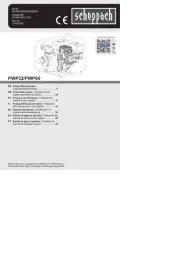
29 Juli 2025
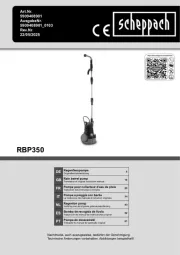
21 Juli 2025
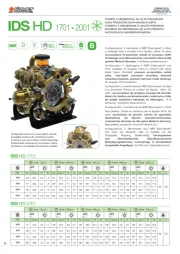
15 Juli 2025
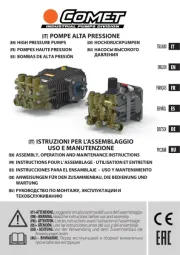
14 Juli 2025
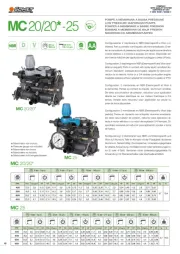
14 Juli 2025
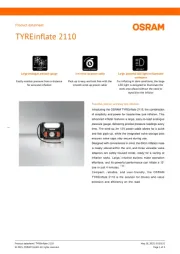
7 Juli 2025
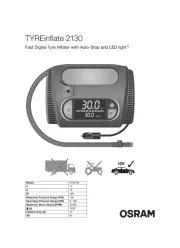
7 Juli 2025
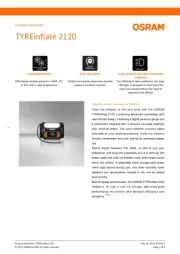
7 Juli 2025
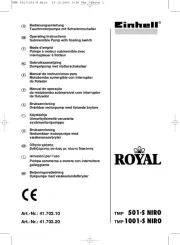
5 Juli 2025
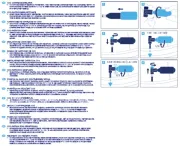
3 Juli 2025